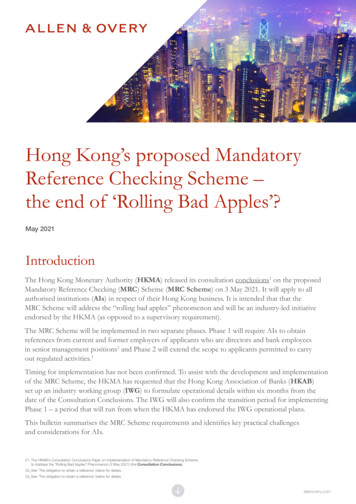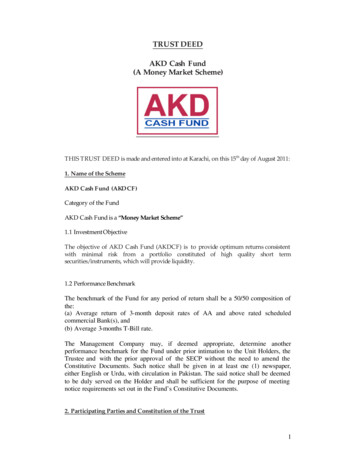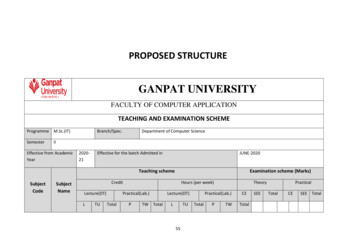
Transcription
PROPOSED STRUCTUREGANPAT UNIVERSITYFACULTY OF COMPUTER APPLICATIONTEACHING AND EXAMINATION SCHEMEProgramme M.Sc.(IT)SemesterBranch/Spec.Department of Computer ScienceIIEffective from AcademicYear202021Effective for the batch Admitted inJUNE-2020Teaching schemeSubjectCodeSubjectNameExamination scheme (Marks)CreditLecture(DT)LTUHours (per alCESEE Total
P42A2WD2WebDesigning- e-III3-32-23-34-4Total12-126-612-1212-12---100 20305060100 2030504060100 203050160240400 6090150Th.Tu.PCList of ElectivesElective-IICourse CodeCourse NameP42A3DATData Analytics Using Tools3-25P42A3WP2Advance Web Programming – II3-25P42A3AT2Advance Technology – II (.Net)3-2556
Elective-IIIP42A3JP2Java Programming Techniques-II3-25P42A3CSCyber Security3-25P42A4DAVData Analysis and Visualization3-25P42A4DMMDigital Media Marketing3-25P42A4ECEcommerce Technology3-25P42A4AADAndroid Application Development3-25P42A4IADIPhone Application Development3-25P42A4CS1Cyber Security-I3-2557
Name of PODescriptionPO - 1Software development for implementing real time projectsPO -2Utilize understanding of the theory and computer applications overviewPO -3To solve software & hardware problemsPO -4Utilize the techniques, skills and modern computer tools, Software and techniques necessary for computerapplication developmentPO -5Develop diff. parts of computer application projects or industrial computingPO -6Generate solutions by experiments and applying techniques to analyze and interpret data for the computerPO -7Evaluate, verify, trouble-shoot, test and analyze an existing computer-based system, process, component orprogram.PO -8Utilization of team workPO -9Express effective communication skills.PO -10Recognize the need for, and an ability to engage in life-long learningPO -11Function effectively as an individual and as a member or leader in diverse teams and in multidisciplinary settings.PO -12Design research problems and contribute to the society58
M.Sc IT (PSO)PSO-1To develop the culture of augmenting existing technologies to create scalable ITsolutions.PSO-2To combine various technologies like IoT, Cloud and Analytics to provideintegrated solutions to real time problems of government /industries.PSO-3Effectively integrate IT-based solutions into the user environment.PSO-4Use and apply current technical concepts and practices in the core InformationTechnologies of human computer interaction, information management,programming, networking.59
GANPAT UNIVERSITYFACULTY OF COMPUTER APPLICATONProgrammeMaster of Computer ScienceBranch/Spec.---Version1.0.0.0(Information Technology)SemesterIIEffective from Academic Year2020-21Subject codeSubject NameP42A1UMLEffective for the batch Admitted inTeaching scheme(Per week)JUN-2020Unified Modeling LanguageExamination scheme --Objective: To teach the students a solid foundation on object-oriented principlesTo teach the student the essential and fundamental aspects of objectoriented analysis and design, interms of “how to use” it for thepurpose of specifying and developing software. To Explore and analyze different analysis and design models, such OOModels, Structured Analysis andDesign Models, etc.Pre-requisites:Knowledge of Business Process, Software Development Process, Knowledge of OOPs Programming, DatabaseLearning/Course Outcome:By the end of the course, Student should:Possess an ability to practically apply knowledge software engineering methods, such as object-orientedanalysis and design methods with a clear emphasis on UML. COsCO1Have a working ability and grasping attitude to design and conduct object-oriented analysis anddesign experiments using UML, as well as to analyze and evaluate their models.Have a capacity to analyze and design software systems, components to meet desired needs.DescriptionTo learn and understand about the conceptual model, Building Blocks, diagram rules, SDLC inUML.60
CO2CO3CO4Knowing about Structural Modeling including class operations, Responsibilities andRelationships.To learn and analyze the class diagrams, Packages, Interface Types and RolesStudents will be able to examine and Implement all of the UML Diagram such as Use CaseDiagrams, Interaction Diagram and Activity DiagramCO-PO 21CO43Theory syllabusUnit1PO5ContentHrs09Introduction to UML:An Overview, A Conceptual Model: Building Blocks- Things, Relationship, Diagrams.,Rules, Common Mechanisms, Architecture, Software Development Life Cycle, UMLModeling with example2Basic Structural Modeling:11Classes: Names, Attributes, Operations, Organizing Attributes and Operations, ResponsibilitiesAdvanced Classes: Classifiers, Visibility, Scope, Abstract Root Leaf and Polymorphic Elements,Multiplicity, Attributes, Operations, Template Classes, Standard Elements., Relationships:Dependency, Generalization, Association., Advanced Relationships: Dependency,Generalization, Association, Realizations.3Advanced Structural Modeling:11Class Diagrams: Common Properties, Contents, Common Uses, Common Modeling Techniques,Forward and Reverse Engineering., Interface Types and Roles: Names, Operations,Relationships, Understanding an Interface, Types and Roles., Packages: Names, OwnedElements, Visibility, Importing and Exporting, Generalization, Standard Elements4Behavioral Modeling:14Interactions: Context, Object and Roles, Links, Messages, Sequencing, Creation, Modificationand Destruction, Representation., Use Cases: Names, Use Cases and Actors, Use Cases andFlow of Events, Use cases and Scnarios, Use Cases and Collaborations, Organizing Use Cases.,Use Case Diagrams: Common Uses, Common Modeling Techniques, Interaction Diagram:Sequence Diagram, Collaboration Diagram, Activity Diagram: Action and Activity States,Transactions, Branching, Forking and Joining, Swimlanes, Object FlowPractical content61
N.A.Text Books:1The Unified Modeling Language User Guide By GradyBooch, James Rumbaugh, Ivar Jacobson LowPrice Edition-Pearson PublicationReference Books:1Software Engineering By Roger S. Pressman Fifth Edition McGraw Hill Publications.2UML Bible by Tom Pender ,Publishing Inc.3Teach Your Self UML in 24 hours by Joseph Schmuller, Pearson Education.MOOC era.org/learn/object-oriented-designWeb lucidchart.com/Question Paper Scheme:Note for ExaminerQ-1 must be common from any topics from syllabus.Q-2 and onwards must be from specific topics and internal choice or option can be givenPaper StructureQ-1 (Attempt any Six Out of Eight: each question must be 5 marks ) --- 30Questions must be covered all possible section.Q-2 (Must be from topics: UNIT-1 (06 marks))Q-3 (Must be from topics: UNIT-2 (08 marks))Q-4 (Must be from topics: UNIT-3 (08 marks))Q-5 (Must be From topics: UNIT-4 (08 marks))62
Note:Version 1.0.0.0 (First Digit New syllabus/Revision in Full Syllabus, Second Digit Revision in TeachingScheme,Third Digit Revision in Exam Scheme, Forth Digit Content Revision)L Lecture, TU Tutorial, P Practical/Lab., TW Term work, DT Direct Teaching, Lab. LaboratoryworkCE Continuous Evaluation, SEE Semester End Examination63
GANPAT UNIVERSITYFACULTY OF COMPUTER APPLICATONMaster of Computer ScienceProgramme(Information Technology)IISemesterEffective from AcademicYearP42A2WD2Subject codeL3Hours3Version1.0.0.0Effective for the batch Admitted inSubjectNameWeb Designing-IIJUN-2020Examination scheme (Marks)Lecture(DT)Credit---2020-21Teaching bjective:AngularJS is a basic structure for making dynamic web applications. HTML is an extraordinaryrevelatory language for static pages. It doesn't contain much for making a unique applications. SoAngular will fill that gap. Precise's information official and reliance infusion wipe out a significantpart of the code than we would really compose. Best of all, everything occurs in the program bymaking it a perfect cooperate with any server innovation.Pre-requisites:Good knowledge of HTML4.0 and java script.Course Outcomes :Cos DescriptionCO1Understanding basic concepts of Angular JS ,environment, attributes, arraysand data bindingCO2Understanding fundamentals of modules, directives, controllers, expressions and scope of Angular JSCO3Learn how to create forms, filters, form validations, Services and different typesof events in AngularJS64
CO4Creation of Animations like HTML DOM, Tables, APIs and Routing like routeparams, redirection inAngular JSMapping of CO and 21302Learning Outcome:After completing this course, students should be able to: Decrease the amount of code you write to build rich user interface applications.Increase the reliability and maintainability of UI by using data binding.Repossess data from back-end server, manipulate it and display it with ease.Modularise your code with the custom services and directives.Providing two way binding of data.Develop Single Page Applications (SPA)Theory syllabusUnit1ContentIntroduction to AngularJS and ArchitectureHrs9MVC Architecture, Conceptual Overview, Setting up the Environment, FirstApplication, Understanding ng attributes, Number and String Expressions, ObjectBinding and Expressions, Working with Arrays, Forgiving Behaviour, UnderstandingData binding2Working with Modules, Directives, Controllers, Expressions, and Scope:11Modules : Create, Adding controller, Adding Directories, Modules and Controllers infile, Directives : ng-app, ng-init, ng-model, ng-repeat, data binding, Controllers: ngcontroller, controller methods, Angular js expressions : numbers, strings, objects, arrays,Scope: Understanding the scope, root scope313Filters, Forms, Services, EventsFilters : built-in filters, Adding filters to expressions, Adding filters to Directives,Custom Filters, Form: Input Control (Input, Select, Button, Textarea), Form Validations,65
Services: http, timeout, interval, Events : ng-Click, Mouse, Toggle, event Object412AngularJS Animations & RoutingAnimationAngularJS - HTML DOM, AngularJS – Tables, Angular JS - Global API, AngularJS CSS, AngularJS - Animate library, Working with ngAnimate,RoutingAngularJS - ng-view, AngularJS - The config function, AngularJS - routeProviderapi,AngularJS - routeParams, AngularJS –redirectTo,AngularJS – ResolveAngularJS Resolve conventionsPractical contentList of programs on the above mentioned topics as per decided by subject facultyText Books1Beginning-AngularJS Andrew Grant Apress2Angular js starter by Dan Menard from packt publishingReference Books1Recipes with Angular JS by Frederik Dietz beta version2Angular 2 Notes for Professionals book3AngularJS in Action LUKAS RUEBBELKE with BRIAN FORD4Angular JS By Brad Green, ShyamSheshadri O’Reilly PublicationsMOOC/Certification Courses1Introduction to AngularJS js2AngularJS For or-beginners-udemy/3LinkedIN learning: Become an ng/paths/become-an-angularjs-developer4Learn AngularJS js5http://www.learn-angular.org/66
6Question Paper Scheme:Note for ExaminerQ-1 must be common from any topics from syllabus.Q-2 and onwards must be from specific topics and internal choice or option can be givenPaper StructureQ-1 (Attempt any Six Out of Eight : each question must be 5 marks ) --- 30Questions must be covered from all possible section.Q-2 (Must be from topics: UNIT-1(07marks))Q-3 (Must be from topics: UNIT-2(07marks))Q-4 (Must be from topics: UNIT-3(08marks))Q-5 (Must be from topics: UNIT-4(08marks))Note:Version 1.0.0.0 (First Digit New syllabus/Revision in Full Syllabus, Second Digit Revisionin Teaching Scheme,Third Digit Revision in Exam Scheme, Forth Digit Content Revision)L Lecture, TU Tutorial, P Practical/Lab., TW Term work, DT Direct Teaching, Lab. Laboratory workCE Continuous Evaluation, SEE Semester End Examination67
GANPAT UNIVERSITYFACULTY OF COMPUTER APPLICATONProgrammeMaster of Computer ScienceBranch/Spec.---Version1.0.0.0Information TechnologySemesterIIEffective from Academic Year2020-21Subject codeSubject NameP42A3DATEffective for the batch Admitted inTeaching scheme(Per week)JUN-2020(Elective-II) Data Analytics Using ToolsExamination scheme 03050Objective:This subject is focus on Machine Learning and data analytics techniques. It focus on different tools andtechniques related implementations. It gives the insight of machine learning to students. Student get the ideaand aware with strength of machine learning.Pre-requisites:Basic knowledge of analytical skills.Course Outcomes :COsDescriptionCO1Able to develop understanding of ML techniques.CO2Learn the model measurement diagnostics.CO3Understand python ML libraries and apply regression models.CO4Understand python ML libraries and apply classification models.COsPO1PO2PO3PO4Mapping of CO and POPO5 PO6 PO7 PO8PO9PO10PO11PO12CO1322020220223CO232202022032368
CO3223131221223CO4333231221103Theory syllabusUnit1ContentData Preparation (12)Hrs12Data Gathering and Preparation: Data formats, parsing and transformation, Scalability and realtime issues, Data Cleaning: Consistency checking, Heterogeneous and missing data, DataTransformation and segmentation, Exploratory Analysis: Descriptive and comparative statistics,2Data Analytics using EXCEL (11)11Install and Understand the Data Analytics PackImporting Data and formats supportedData Pre-processing with EXCELData visualisation in EXCELCo-relation & Regression Analysis and statistically method supportApply Moving AverageExponential MA3.Data Analytics using KNIME Tool (11)11Install and Understand the Open source tool KNIMEImporting Data and formats supportedData Pre-processing with KNIMEData visualisation in KNIMECo-relation & Regression Analysis and statistically method supportApply any Classification modelApply any Cluster based model4.Data Analytics using WEKA Tool (11)11Install and Understand the Open source tool WEKAImporting Data and formats supportedData Pre-processing with WEKA69
Data VisualisationClassification demoClustering DemoAssociation DemoPractical contentList of programs on the above mentioned topics as per decided by subject facultyText Books1Hands-On Machine Learning with Microsoft Excel 2019: Build Complete Data Analysis Flows, From DataCollection to Visualization Book by Julio Cesar Rodriguez 273https://www.youtube.com/watch?v mc5DBLCkEXwReference MOOC/Certification science/data-analysisQuestion Paper Scheme:Question Paper Scheme:University Examination Duration: 3 HoursPaper StructureQ-1 (Attempt any Six Out of Eight: each question must be 5 marks) --- 30Questions must be covered all possible Topics.Q-2 (Must be from topic:1 (Data Preparation)(6 Marks))Q-3 (Must be from topic: 2 (Data Analytics using EXCEL) (9 Marks))Q-4 (Must be from topic: 3 (Data Analytics using KNIME Tool) (6 Marks))Q-5 (Must be from topic:4 (Data Analytics using WEKA Tool) (9 Marks))70
GANPAT UNIVERSITYFACULTY OF COMPUTER APPLICATIONMaster of Computer ormation Technology)IISemesterEffective from Academic YearP42A3WP2Subject code2020-21Effective for the batchAdmitted inSubject NameAdvance Web Programming – IITeaching scheme(Perweek)JUN-2020Examination scheme 050Objective:To understand the concept of frameworkIt makes coding in PHP simple, quick and user-friendly.It underpins the Model/View/Controller (MVC) approach to web developmentPre-requisites:Basic programming knowledge of PHP with HTMLLearning Outcome:CosDescriptionCO1To understand the use of Model-View-Controllerpattern using PHP CodeIgniterFrameworkCO2Use and execute the function assist in working with forms.CO3Usage and apply PHP CodeIgniter for CRUD Operation.71
CO4Use and applyadvance Helpers - collections of useful procedural functions.Mapping of CO and PO:CosCO1CO2CO3CO4PO1 PO2 PO3 PO4 PO5 PO6 PO7 PO8 PO9 PO10 PO11 01Theory syllabusUnit1ContentHrs08Initial Setup and ConfigurationOverview, CodeIgniter Features, install CodeIgniter, CodeIgniter - ApplicationArchitecture, Directory Structure, CodeIgniter - MVC Framework215Form Management using MVCBasic Concepts – Controllers, Views and Model, Form Validation, Flashdata, SessionManagement, Cookie Management, Page Redirection, Configuring Base URL, DatabaseConfiguration, Autoload Configuration,34Working with Database and Error handlingConnecting to a Database, Selecting a Record, Inserting a Record, Updating a Record,Deleting a Record, CodeIgniter – Libraries, Overview of Library Class & Description,Error Handling10Library Classes12File Uploading, Sending Email, Image Manipulation Class, Encryption Class,Pagination Class, CodeIgniter – SecurityPractical contentList of programs specify by subject teacher based on above mention topics.Text Books1Codeigniter for Rapid PHP Application Development, David Upton, PACKT PublishingReference Books1Practical CodeIgniter 3, Lonnie Ezell , Lean Publishing72
2Web Reference : https://www.codeigniter.com3Web Reference : tification ps://ranksheet.com/online-exams/PHP s6https://alison.com/courses?query phpNote for ExaminerQ-1Must be common from any topics from syllabus.Q-2 And onwards must be from specific topics and internal choice or option can be givenPaper StructureQ-1 (Attempt any Six Out of Eight: each question must be 5 marks ) --- 30Questions must be covered all possible section.Q-2 (Must be from topics: UNIT-1 (7 marks))Q-3 (Must be from topics: UNIT-2 (8 marks))Q-4 (Must be from topics: UNIT-3 (7 marks))Q-5 (Must be from topics: UNIT-4(8 marks))Note:Version 1.0.0.0 (First Digit New syllabus/Revision in Full Syllabus, Second Digit Revision inTeaching Scheme,Third Digit Revision in Exam Scheme, Forth Digit Content Revision)L Lecture, TU Tutorial, P Practical/Lab., TW Term work, DT Direct Teaching, Lab. Laboratory workCE Continuous Evaluation, SEE Semester End Examination73
GANPAT UNIVERSITYFACULTY OF COMPUTER APPLICATONProgrammeMaster of Computer ScienceBranch/Spec.---Version1.0.0.0(Information Technology)SemesterIIEffective from Academic Year2020-21Effective for the batch Admitted inSubject codeSubject Name(Elective-II) Advance Technology – II(.Net)P42A3AT2Teaching scheme(Per week)JUN-2020Examination scheme 03050Objective:To learn the fundamentals of web developing. This course provides a practical hands-on introduction todeveloping Web applications using ASP.NET Core MVC with C#. Acquiring sufficient knowledge on roleof Model, View and Controller in integrating them to develop complete web application Access databasesand performing CRUD operations using LINQ and Entity Framework.Pre-requisites:The student should have a good working knowledge of HTML and the .NET Framework. Basicknowledge of ASP.NET Web Forms is recommended.Course Outcomes :COsCOsCO1DescriptionCO1Understand MVC design patternCO2Know the concepts of ASP.NET core MVCCO3To create Model, View and ControllerCO4Able to develop dynamic web application by using ASP.NET core MVCCO5Able to develop Web API by using ASP.NET core MVCPO11PO20PO30PO43Mapping of CO and POPO5 PO6PO7 PO8110074PO90PO101PO111PO120
0332230221Learning Outcome:After completing this course, students should be able to:Get to know the concepts of ASP.NET core MVC and build a new static web page using HTML,CSS, and jQueryCreate a Controller with action methods.Build a view using several features of the Razor View engine.Construct a Model for ASP.NET Core MVC application.Develop complete web application Access databases and performing database operations usingLINQ and Entity FrameworkTheory syllabusUnit1ContentASP.NET Core MVCHrs12ASP.NET Core MVC Introduction, ASP.NET Core - MVC Design Pattern, Routing, AttributeRoutes, Action Results, Razor Layout Views, Create a web app with ASP.NET Core MVC, Add acontroller, Add a view, Add a model, Work with SQL Server LocalDB, Controller methods andviews, Add search, Add a new field, Add validation, Examine the Details and Delete methods2ASP.NET Core MVC with Entity Framework Core11Get started, Create, Read, Update, and Delete operations, Sorting, filtering, paging,andgrouping, Migrations, Create a complex data model, Reading related data, Updating relateddata3Areas in ASP.NET Core11Areas for controllers with views, Area folder structure, Add Area route, Link generation withMVC areas,Filters in ASP.NET CoreHow filters work, Filter types - Authorization filters, Action filters, Result filters, Exceptionfilters, Resource filter, Filter Attributes4Web API with ASP.NET Core MVC11Introduction to Web API, Create a web API project, Add a model class and a databasecontext, Scaffold a controller with CRUD methods,Configure routing, URL paths, and75
return values,Call the web API with Postman, Consume Web API with JavaScriptPractical contentList of programs on the above mentioned topics as per decided by subject facultyText Books1ASP.NET Core 2.0 MVC and Razor Pages for BeginnersReference Books1Pro ASP.NET Core MVC, Adam Freeman, Apress2Pro Entity Framework Core 2 for ASP.NET Core MVC, Adam Freeman, Apress3Web Reference - https://docs.microsoft.com/MOOC/Certification -side-application-using-aspnet-cor2MCSA: Web ApplicationsMicrosoft Certified Solutions AssociateExam 70-480/Course 20480Programming in HTML5 with JavaScript and CSS3Exam 70-483 Programming in C#Credit toward certification: MCSAExam 70-486/Course 20486Developing ASP.NET MVC Web ApplicationsQuestion Paper Scheme:Note for ExaminerQ-1 must be common from any topics from syllabus.Q-2 and onwards must be from specific topics and internal choice or option can be givenPaper StructureQ-1 (Attempt any Six Out of Eight: each question must be 5 marks ) --- 30Questions must be covered all possible section.Q-2 (Must be from topics: UNIT-1 (10 marks))Q-3 (Must be from topics: UNIT-2 (06 marks))76
Q-4 (Must be from topics: UNIT-3 (06 marks))Q-5 (Must be From topics: UNIT-4 (08 marks))Note:Version 1.0.0.0 (First Digit New syllabus/Revision in Full Syllabus, Second Digit Revision in TeachingScheme,Third Digit Revision in Exam Scheme, Forth Digit Content Revision)L Lecture, TU Tutorial, P Practical/Lab., TW Term work, DT Direct Teaching, Lab. LaboratoryworkCE Continuous Evaluation, SEE Semester End Examination77
GANPAT UNIVERSITYFACULTY OF COMPUTER APPLICATONProgrammeMaster of Computer ScienceBranch/Spec.---Version1.0.0.0(Information Technology)SemesterIIEffective from Academic Year2020-21Effective for the batch Admitted inSubject codeSubject Name(Elective-II) Java Programming Techniques -IIP42A3JP2Teaching scheme(Per week)JUN-2020Examination scheme 03050Objective:This course develops programming ability of students to create dynamic web applications using serverside technology with Java Database Connectivity. Different Java frameworks like Java Server Facesand Hibernate will increase ability of students in web application development.Pre-requisites:Basic knowledge of core Java.Course Outcomes :COsDescriptionCO1Able to develop understanding of servlet techniques.CO2Make web base Application using sevlet and JSPCO3Make web base Application using JSF with JDBCCO4COsAble to develop understanding of Hibernate FrameWork.Mapping of CO and POPO1 PO2 PO3 PO4 PO5 PO6 PO7 PO8 PO9 PO10PO11PO12CO1321020220113CO232202022011378
CO3223231220113CO4333231220113Learning Outcome:After completing this course, students should be able to:Gain the knowledge of Server Side programing by implementing Servlet and JSP.Create dynamic web pages, using Servlets and JSP.Design and Develop various application by Integrating any of Servlets, JSPs using DatabaseGain knowledge of frameworks such as JSF and Hibernate Architecture, Distinguish JDBC andHibernate.Use JSF frameworks, which gives the opportunity to reuse the codes for quick development.Map Java classes and object associations to relational database tables with Hibernate mapping files.Theory syllabusUnit1ContentHrs7ServletIntroduction of servlet, Servlet Life Cycle,Servlet API, GenericServlet, HttpServlet,servletRequest method, RequestDispatcher, sendRedirect,Reading Form Data fromServlets, Session Tracking: Cookies, Hidden Form field, URL Rewriting, HttpSession.214JSPIntroduction of JSP, Advantages of JSP over Servlet, Life cycle of JSP, JSP API,Scriplet Elements, Implicit Objects, Directive Elements, Action Elements.JDBC with JSP and ServletsJDBC Examples using Servlets and JSP.3Java Server Faces MVC Frameworks and JDBCJSF Framework Services, Message Bundles, Bean Scopes, Static Navigation, DynamicNavigation, Panels, The Head, Body, and Form Tags, Text Fields and Text Areas,Buttons and Links, At least five Selection Tags, The Data Table Tag–h:dataTable, ASimple Table, Headers, Footers, and Captions, Editing Tables, Database Tables,Overview of the Conversion and Validation Process, Using Standard Converters, UsingStandard Validators, Events and the JSF Life Cycle, Value Change Events, Usingdatabase CRUD operations like INSERT, UPDATE, DELETE, SELECT with javaserver faces.7914
410HibernateOverview of Hibernate, Hibernate Architecture, Hibernate Mapping Types, Workingwith Object, Persistent, Entity, Relation (ORM), Hibernate APIs, Mappings: BasicMapping, Primary Key Mapping and Relational Mapping, Hibernate Annotation,Hibernate Query Language, Using database CRUD operations like INSERT, UPDATE,DELETE, SELECT with hibernate.Practical contentList of programs on the above mentioned topics as per decided by subject facultyText Books1 2 Core Servlets and Java Server Pages Volume1 and 2, Second Edition, 2004 By Marty Hall andLarry Brown, PEARSON EducationCore Java Server Faces, Third Edition, 2011 By David Geary and Cay Horstmann, PEARSONEducationReference Books1 2The Complete Reference Java Server Faces 2.0 Edition 2010 By EdBurnsand Chris Schalk,Tata McGraw-HillGuide to Java Persistence and Hibernate, by Sebastian Hennebrueder.3Java Persistence and Hibernate, Christian Bauer and Gavin king by Linda 3 DeMichiel.MOOC/Certification stence-api-jpa-fundamentals/Question Paper Scheme:Note for ExaminerQ-1 must be common from any topics from syllabus.Q-2 and onwards must be from specific topics and internal choice or option can be givenPaper StructureQ-1 (Attempt any Six Out of Eight: each question must be 5 marks ) --- 30Questions must be covered all possible section.Q-2 (Must be From topics: Servlet (5 marks))Q-3 (Must be From topics: JSP (7 marks))80
Q-4 (Must be From topics: Java Server Faces MVC Frameworks and JDBC (10 marks))Q-5 (Must be From topics: Hibernate ( 8 marks))Note:Version 1.0.0.0 (First Digit New syllabus/Revision in Full Syllabus, Second Digit Revision in TeachingScheme,Third Digit Revision in Exam Scheme, Forth Digit Content Revision)L Lecture, TU Tutorial, P Practical/Lab., TW Term work, DT Direct Teaching, Lab. LaboratoryworkCE Continuous Evaluation, SEE Semester End Examination81
GANPAT UNIVERSITYFACULTY OF COMPUTER APPLICATIONSMaster of Computer Science(Information .0.0.0Effective from Academic Year2020-21Effective for the batch Admitted inSubject CodeSubject Name(Elective-II) Cyber SecurityP42A3CSTeaching scheme(Per week)Lecture (DT)LCreditHours33Examination scheme (Marks)Practical (Lab.)TU-June 10050Objective:Students able to learn following things Understand the fundamentals of Cyber Security conecepts Able to learn the various application security Understand about the developing Secure Information Systems Able to learn the security policies.Pre-requisites:Basic knowledge of computerCourse Outcome:Name of CODescriptionCO1To learn and understand about the fundamentals of Cyber Security concepts.CO2Knowing about the various application of the security, threats and Viruses.To learn and analyze about the developing various Secure InformationSystems and its Backup Security Measures.Students will be able to examine and implement several security policies.CO3CO4Mapping of CO and POPO2 PO3 PO4 2PO90PO101PO112PO12222201122332022332230233
AngularJS is a basic structure for making dynamic web applications. HTML is an extraordinary revelatory language for static pages. It doesn't contain much for making a unique applications. . Text Books 1 Beginning-AngularJS Andrew Grant Apress 2 Angular js starter by Dan Menard from packt publishing Reference Books
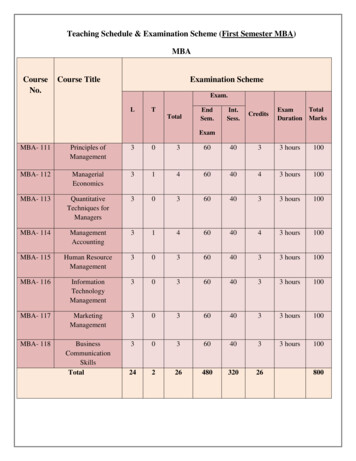
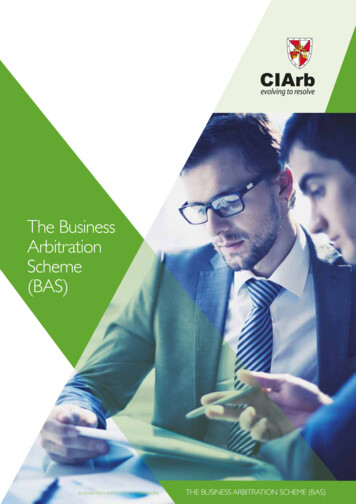
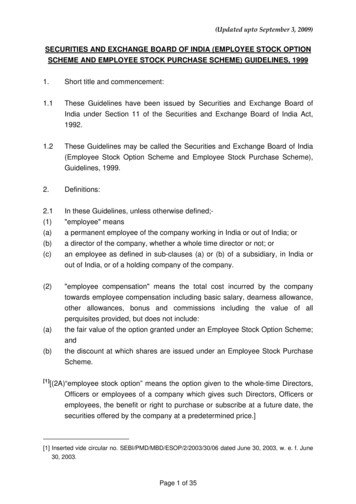
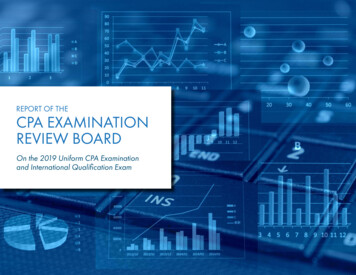
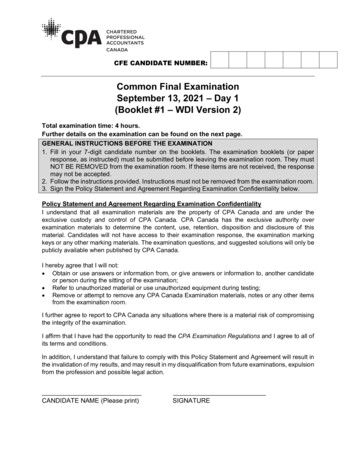
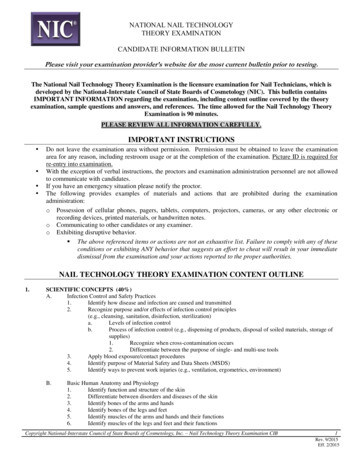
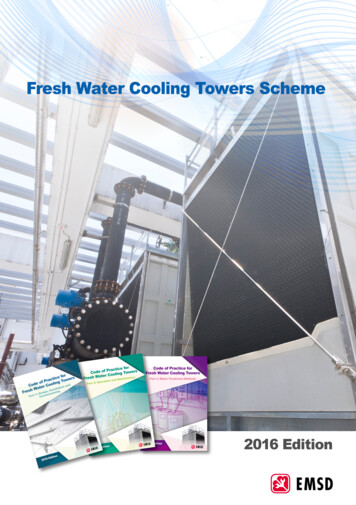
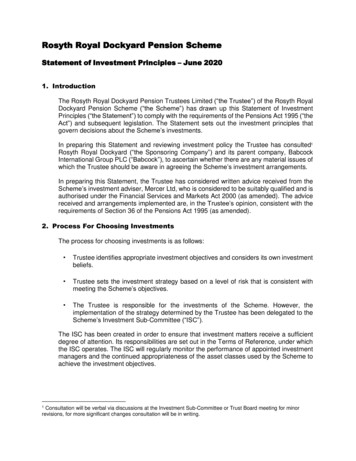
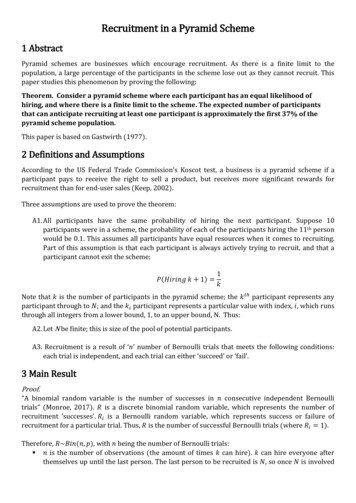
![[Title to come] DSP Dynamic Asset Allocation Fund](/img/24/dsp-dynamic-asset-allocation-fund.jpg)
